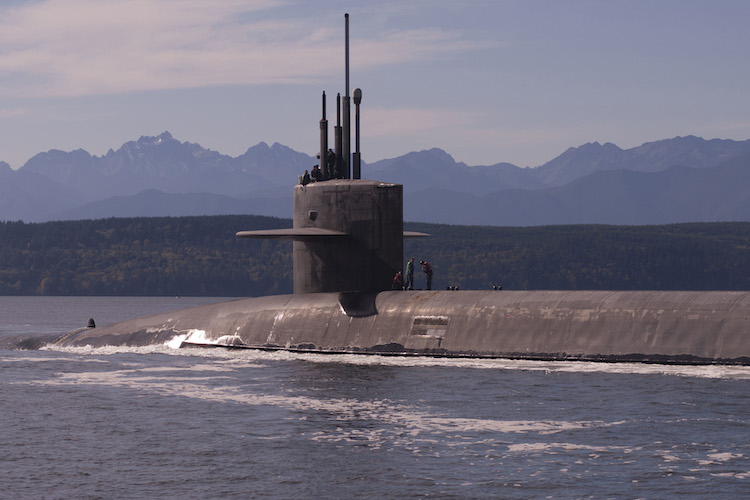By J C Suresh
TORONTO | WASHINGTON, D.C. (IDN) — While independent arms control experts around the world heaved a sigh of relief at Joe Biden’s signature decision to extend the New START Treaty with Russia through February 4, 2026, Pentagon officials say it is “just the beginning of a larger discussion with Russia and China about placing further limits on nuclear weapons proliferation”.
The Pentagon is the headquarters building of the United States Department of Defense (DOD). As a symbol of the U.S. military, the phrase The Pentagon is also often used as a metonym or synecdoche for the Department of Defense (DOD) and its leadership.
Addressing the virtual Air Force Association’s Aerospace Warfare Symposium on February 26, Air Force Gen. John E. Hyten, vice chairman of the Joint Chiefs of Staff, said that the New START treaty with Russia “is a good thing because it limits nuclear weapons and has a process to verify adherence”.
New START continues the bipartisan process of verifiably reducing U.S. and Russian strategic nuclear arsenals begun by former Presidents Ronald Reagan and George H.W. Bush. New START is the first verifiable U.S.-Russian nuclear arms control treaty to take effect since START I in 1994.
Officially known as the Treaty on ‘Measures for the Further Reduction and Limitation of Strategic Offensive Arms’ entered into force on February 5, 2011. Its original duration was 10 years until February 5, 2021, with the option for the Parties to agree to extend it for up to an additional five years.
Hyten said that both the United States and Russia met the central limits of the New START Treaty by February 5, 2018 and have stayed at or below them ever since. Those limits are:
700 deployed intercontinental ballistic missiles (ICBMs), deployed submarine-launched ballistic missiles (SLBMs), and deployed heavy bombers equipped for nuclear armaments.
1,550 nuclear warheads on deployed ICBMs, deployed SLBMs, and deployed heavy bombers equipped for nuclear armaments; each such heavy bomber is counted as one warhead toward this limit.
800 deployed and non-deployed ICBM launchers, SLBM launchers, and heavy bombers equipped for nuclear armaments.
ICBMs capable of delivering nuclear weapons, heavy bombers and submarines comprise America’s nuclear triad.
“The nuclear triad is important because it’s there to deter Russia, China and, to some extent, North Korea and Iran from delivering nuclear strikes on the U.S. and its allies,” said Air Force Gen. John E. Hyten, vice chairman of the Joint Chiefs of Staff.
Established in January 1942 to expedite strategic coordination during World War II, the Joint Chiefs of Staff have been at the center of U.S. military planning ever since.
However, extension of the New START treaty is “just the beginning of a larger discussion with Russia and China about placing further limits on nuclear weapons proliferation”. Because Russia is building new capabilities — such as nuclear-armed torpedoes, nuclear armed cruise missiles and sea-launched ballistic missiles — that the DOD feels can “threaten the U.S. and are not accountable under the Treaty”.
And, then, there’s China, Hyten said. “China is the fastest growing nuclear power in the world. They’re building at a percentage level, more new nuclear weapons than anybody on the planet. They’re building new platforms. They’re building new facilities, new airplanes, new missiles of a variety of types, new hypersonic capabilities, hypersonic capabilities that we have no defenses for, hypersonics that can be nuclear tipped.
“And we have no arms control agreement with China in any way, so we have no insight into their nuclear doctrine,” he added. “That is a difficult place to be.”
The other problem, the DOD believes, is that while Russia is finishing its nuclear modernization program and China is in the midst of rapid modernization, the U.S. is just starting its nuclear modernization program.
The U.S. must also have a credible sea-launched cruise missile in order to respond to the Russian capabilities and a low-yield nuclear weapon that can be deployed in small numbers on submarines to deal with the thousands of low-yield nuclear and tactical nuclear weapons Russia is building that aren’t accountable with the New START treaty, the U.S. Air Force General said.
“We have to continue to invest in our triad and make sure that we look at all of our adversaries’ capabilities because the one thing we don’t want is nuclear confrontation and nuclear war on this planet. And the only way to avoid that is to deter our adversaries,” he said.
This is a distinct indication that “a qualitative nuclear arms race is underway” about which UN Secretary-General António Guterres has warned. Bloomberg opinion columnist Andreas Kluth warns: “The Risk of Nuclear Cataclysm Is Increasing“.
In fact, the Pentagon has identified hypersonics as one of the highest priority modernization areas, “as Russia and China develop their own capable systems”.
Hypersonic systems are able to travel on extended flights within the upper atmosphere — 80,000 to 200,000 feet — at speeds near and above Mach 5 (that greatly exceeds the speed of sound), and they’re able to maneuver in ways that are hard for defenders to predict.
“The high-altitude range creates a gap between air defenses and ballistic missile defenses”, Mike White, principal director for hypersonics in the office of the undersecretary of defense for research and engineering, said at the virtual Air Force Association’s Aerospace Warfare Symposium.
The department has developed a hypersonics modernization strategy that accelerates the development and delivery of transformational warfighting capabilities. He said the strategy consists, among others, of developing air-, land-, and sea-launched, conventionally-armed hypersonic strike weapons for highly-survivable, long-range, time-critical defeat of maritime, coastal and inland targets of critical importance on the tactical battlefield. [IDN-InDepthNews – 28 February 2021]
Photo: The Ohio-class ballistic missile submarine USS Louisiana transits the Hood Canal in Puget Sound, Wash., Oct. 15, 2017, as it returns to its homeport following a strategic deterrent patrol. Photo By: Navy Lt. Cmdr. Michael Smith | DOD


